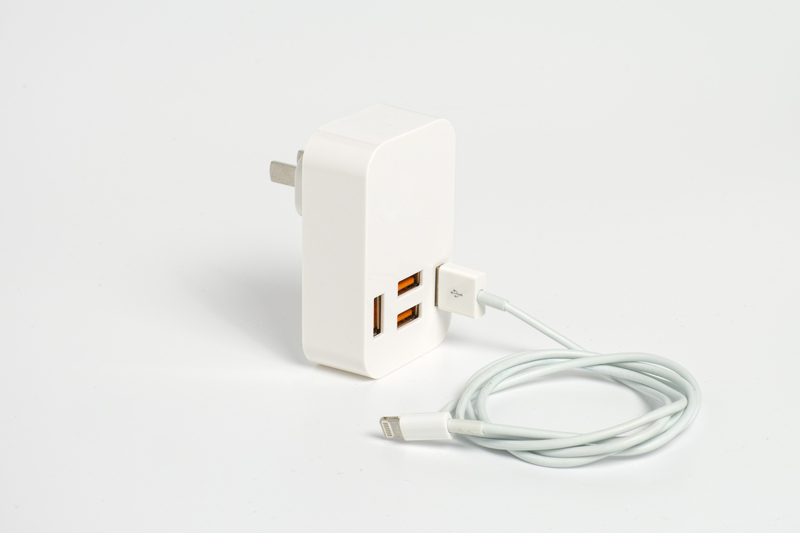Avoid Common Mistakes When Moving Your Bed and Mattress
Moving can be an overwhelming process, especially when it comes to transporting large furniture pieces like your bed and mattress. Making a wrong move can result in damages, injuries, or even loss of comfort at your new home. In this comprehensive guide, we share essential tips to avoid common mistakes when moving your bed and mattress. Whether you're relocating across town or making a cross-country move, these best practices will ensure your sleep setup arrives safely and in excellent condition.
Why is Moving Your Bed and Mattress Properly So Important?
Your bed and mattress are significant investments in comfort and health. Mishandling during a move can lead to costly damages, void warranties, or result in a poor night's sleep at your new place. By paying close attention to the details involved in moving your mattress and bed frame, you safeguard your possessions and make the transition smoother for you and your family.

Top Mistakes People Make When Moving Beds and Mattresses
Before diving into the right way, let's review the most common mistakes people make when relocating beds and mattresses:
- Underestimating the weight and size of your mattress or bed frame
- Moving the mattress without proper protection
- Disassembling the bed frame incorrectly or forgetting hardware
- Dragging rather than lifting, causing structural damage to bed frames
- Improper loading and placement in the moving vehicle
- Attempting a solo move rather than seeking help
- Not planning for obstacles like stairs, doorways, or narrow halls
- Neglecting to clean the mattress before moving
- Forgetting to allow for mattress recovery time after transport
Each of these mistakes can be costly, damaging, or even dangerous. Let's explore how you can expertly avoid these moving mishaps.
Step-By-Step Guide to Properly Move a Bed and Mattress
To help you avoid mistakes when moving your bed and mattress, follow these comprehensive steps:
1. Prepare Your Bed and Mattress for the Move
- Measure First: Before doing anything, measure the dimensions of your bed frame, headboard, footboard, and mattress. Then compare these measurements with the dimensions of your new home's doorways, stairs, and halls. This helps you plan the best route and avoid last-minute surprises.
-
Gather Essential Supplies:
- Mattress bag or plastic cover
- Moving blankets
- Bubble wrap
- Furniture dolly or hand truck
- Basic toolkit (screwdriver, Allen wrench, etc.)
- Zippered hardware bags
- Heavy-duty tape and markers
- Strip Bedding: Remove and pack all bedding, pillows, and accessories separately. Wash and dry them before packing to ensure everything arrives fresh at your new place.
2. Protect Your Mattress from Dirt and Damage
- Use a Mattress Bag: One of the most common mistakes when moving a mattress is not protecting it from dust, moisture, or tears. Slip your clean mattress into a high-quality, waterproof mattress bag. If you can't get a specific mattress cover, industrial plastic wrap serves as an alternative.
- Avoid Folding: Do not fold memory foam, latex, or innerspring mattresses unless specified by the manufacturer. Folding can damage the internal structure and void warranties. If you must maneuver around tight corners, stand the mattress upright and be gentle.
3. Disassemble the Bed Frame Carefully
- Take Photos: Before you start disassembling, take reference photos of how the bed frame is assembled. This is especially helpful for complex frames and will save you time during reassembly.
- Label and Bag Hardware: Keep all screws, bolts, and hardware in a small, zippered bag, and securely tape it to a prominent piece of the bed frame or label it unmistakably. This is crucial to avoid one of the top mistakes--losing bed frame hardware during the move.
- Wrap Frame Components: Use bubble wrap or moving blankets to wrap the individual pieces, especially if made of wood or metal. Secure with tape (but not directly on the surface as it may damage finishes).
4. Transport the Mattress Safely
- Get Help Lifting: Mattresses are heavier and more unwieldy than they look. Always enlist at least one helper. Trying to move heavy mattresses solo not only risks injury but can result in property or item damage.
- Avoid Dragging: Dragging your bed or mattress across floors can snag the cover or warp the structure. Always lift, or use a suitable hand truck or dolly.
- Upright or Flat? Most mattresses should be transported flat to avoid the inner springs or foam from becoming distorted. However, if space is limited, standing the mattress upright for short periods is acceptable. Make sure it is well-supported and won't tip over.
5. Load with Caution in the Moving Truck
- Mattress Placement: Place the mattress either flat on top of soft items (like couches or padded boxes) or upright along the side wall of the truck. Avoid letting sharp objects press against it. Use straps to keep it from slipping.
- Bed Frame Parts: Stack bed frame pieces together and position them securely to prevent movement during transport. Use moving blankets to pad and protect, especially to avoid scratches, dings, or breakage.
6. Unpack and Reassemble
- Let Your Mattress Breathe: When you arrive, remove the protective bag and let the mattress breathe for several hours. This helps dissipate odors and lets the materials decompress.
- Reassemble with Reference: Use the photos you took earlier as a reference to quickly and correctly reassemble your bed frame. Replace all screws and fittings--don't leave out support brackets or slats.
- Check for Damage: Before using, inspect your mattress and frame for scuffs, rips, or broken parts. Early detection allows for quick repairs and, if necessary, making warranty claims.
Special Considerations for Different Bed and Mattress Types
King and Queen-Sized Beds
Larger beds require extra attention. Disassemble as much as possible and recruit additional helpers. Be particularly careful with split-box springs or adjustable bases, as they have additional electrical or moving parts to consider. Wrap delicate or mechanical elements carefully and avoid jarring impacts.
Foam, Latex, and Hybrid Mattresses
Each material type comes with its unique moving recommendations. For example, memory foam mattresses can be more flexible, but improper bending can cause permanent creases. Always follow manufacturer guidelines. Hybrid mattresses often contain both coils and foam, necessitating gentle handling and a flat position during transport to protect all layers.
Platform and Slatted Beds
Platform beds may include heavy wood panels and slats. Keep slats together and label them--some are different sizes or must be installed a certain way. This step can help prevent frustration during reassembly.
Expert Tips for a Smooth Bed and Mattress Move
- Start Early: Don't leave bed disassembly and packing until moving day. Starting a few days early reduces stress and helps you spot missing tools or supplies.
- Read the Manual: Check your bed frame and mattress manual for specific moving advice and warranty restrictions.
- Label Everything: Use painter's tape or sticky notes on each part. Note which end is "head" or "foot," especially for unique bed frames.
- Keep Pathways Clear: Map out your exit route, removing rugs, shoes, or debris. For tight corners or stairs, have a spotter guide you through.
- Protect Walls and Floors: Use corner guards or old towels to avoid scratching paint or wood during the move.
- Enlist Professionals for Heavy or Antique Beds: If in doubt, don't hesitate to hire professional movers who have experience moving beds and mattresses safely.

Frequently Asked Questions on Moving Beds and Mattresses
How do I protect my mattress while moving?
Always use a mattress bag or heavy-duty plastic cover to shield against tears, moisture, and dirt. Then, secure it with tape and make sure it is supported evenly during lifting and transport.
Is it okay to fold my mattress to fit it in my car?
In most cases, folding a mattress is not recommended, especially with innerspring or hybrid types. Only move a mattress folded if the manufacturer explicitly states it is safe.
Can I move a bed frame without taking it apart?
For small or simple frames, it's sometimes possible, but disassembly is almost always the safer and more efficient choice. Full or queen-size beds are nearly impossible to fit through standard doorways without disassembly.
How many people do I need to move a bed and mattress?
At least two people are recommended for mattresses, and three or more for king-sized or heavy bed frames. Don't risk injuries by moving bulky items alone.
What if my mattress gets damaged during the move?
Inspect your mattress as soon as you arrive. For minor scuffs, a mattress cover may still protect underlying materials. For rips or severe damage, you may need to claim insurance or a warranty, especially if you used professional movers.
Final Thoughts: Safeguard Your Sleep Investment
Moving your bed and mattress properly is more than a matter of convenience--it's about protecting your investment and ensuring comfort at your new home. By following these tips and avoiding common mistakes when moving your mattress and bed, you significantly reduce the risk of damage or injury. Remember: be patient, plan ahead, and don't hesitate to ask for advice or professional help when needed.
Happy moving--and sleep well in your new home!



